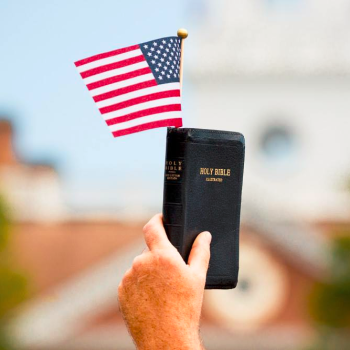 When I graduated from divinity school, I was homeless. Not in a literal kind of way but a spiritual one. I had been living in the same city for two years without a church to call my own. Sure, I had dated a few congregations on and off but nothing serious developed. The only names I remembered were the ones printed in the bulletin and if anyone remembered mine, well, I didn’t give them a lot of chances to prove it. If I wanted to find a church where I could know and be known, I’d have to take some responsibility for my belonging. I’d have to sign my name on the pew pad.
When I graduated from divinity school, I was homeless. Not in a literal kind of way but a spiritual one. I had been living in the same city for two years without a church to call my own. Sure, I had dated a few congregations on and off but nothing serious developed. The only names I remembered were the ones printed in the bulletin and if anyone remembered mine, well, I didn’t give them a lot of chances to prove it. If I wanted to find a church where I could know and be known, I’d have to take some responsibility for my belonging. I’d have to sign my name on the pew pad.
Yes, I’m about to spend 500+ words talking about the pew pad – or whatever way your church keeps up with who shows up. As part of the “Trust Me” series, I’m breaking down the small things churches can do that build big trust with Millennials. At first thought the pew pad might seem insignificant. It’s typically seen as a mechanism to track attendance rather than to invite belonging (as the bulletin does.) The pew pad, though, is often the first invitation to the worshiper to make herself known. It’s her first opportunity to say who she is (and maybe even what she likes to be called.) For a brief moment, she’s given personal agency in an oft-scripted service until – until a staff person announces the reason behind the gesture: “to let us know you’re here.”
Maybe you’ve heard that Millennials don’t respond well to authority figures. This isn’t entirely true, according to the Center for Creative Leadership. It’s more that we want to know the “why” of things before committing to the “what”. Why do you want to know I’m here? I’m not that interested in being a number on your attendance rolls. Nor do I really care to be a to-do on some staff person’s follow-up list if I haven’t asked for that. (I warned you when this series began that Millennials can be a cagey bunch.) My husband, who works at a church, says tracking member attendance and connecting with newcomers is an important part of the staff’s role as community facilitators. But instead of facilitating community between me and my fellow worshipers, the pew pad is often used to broker community between me and the church higher-ups.
When I finally signed my name in a pew pad post-grad school, it was at an evangelical congregation with mainline roots. An usher in a cropped red vest showed me to a seat at the end of a wooden pew. I hardly noticed the green pad beside me; it looked like one of those guest books you’d sign at a wedding while waiting for the buffet line to open. It wasn’t until the pastor began his sermon by inviting us to write our name in the thing and pass it down the pew and back again that I considered its value. “This isn’t primarily to let us know you’re here,” he said, “but rather to learn the names of those sitting next to you.”
That explanation changed everything for me. “Study those names. Learn those names, and especially if you’ve been around here longer than six months, use those names after the service today,” he counseled. No longer did I see writing my name in the pew pad as a ritual of complying with church authority but one of accepting the authority of the laity.
Perhaps even more important than the why for me behind church rituals like the pew pad is the “who.” Who is the “us” who cares to see my name drawn in all caps and my address purposefully left blank? Who will carry my name with them after I leave this place? Who will notice if I don’t come back next week or the week after that? I don’t dispute church staff are important for fostering healthy relationships among their congregants (and between the denomination). It’s worth noting that since starting this series, more than one reader has cited lack of personalized follow-up from a church leader as reason for their broken trust. But for a church to thrive, leaders have to make it a regular practice to get out of the way so the rest of us can get in the way of God and each other.
We are the laity; It is for “us” that we sign our name on the pew pad and nudge our neighbor to sign theirs. It is for “us” to know and be known. It is for “us” to accept belonging for ourselves.
Micro-Resolution #3: Give me something to do. At the same time during each service, invite laity to use the pew pad (or whatever means you prefer) to share and learn names. Make sure you instruct us to pass it down the pew and back again. You may even encourage us to sit in the same spot each week until we’re friendly with our pew mates – then switch seats. Of course, if names will be used in some other way, let us know this too.
Then, when we complain to you that we don’t know anyone in our congregation, you can reply in the same vein as Jesus did to his disciples, “You give them someone to know.”
 Erin S. Lane is author of Lessons in Belonging from a Church-Going Commitment Phobe and co-editor of Talking Taboo. Confirmed Catholic, raised Charismatic, and married to a Methodist, she facilitates retreats for clergy and congregational leaders through the Center for Courage & Renewal. To find more of her writing, visit www.holyhellions.com.
Erin S. Lane is author of Lessons in Belonging from a Church-Going Commitment Phobe and co-editor of Talking Taboo. Confirmed Catholic, raised Charismatic, and married to a Methodist, she facilitates retreats for clergy and congregational leaders through the Center for Courage & Renewal. To find more of her writing, visit www.holyhellions.com.















